Research Report: 2020
▼ Choose a report:

Powered by Research & Graduate Studies

Powered by Arts and Social Science
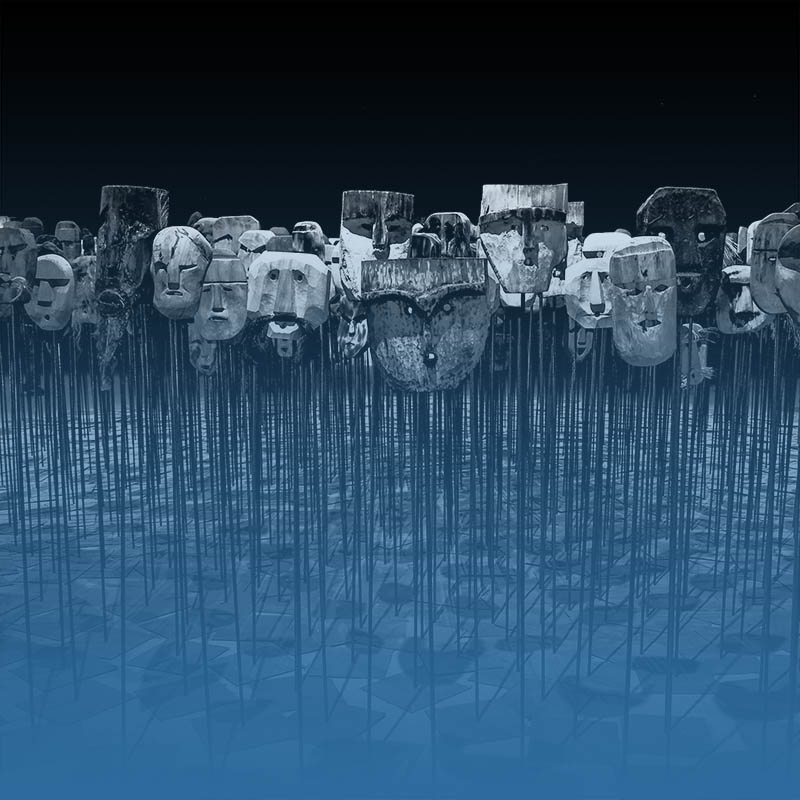
Powered by Fine Arts

Powered by Science and the Environment
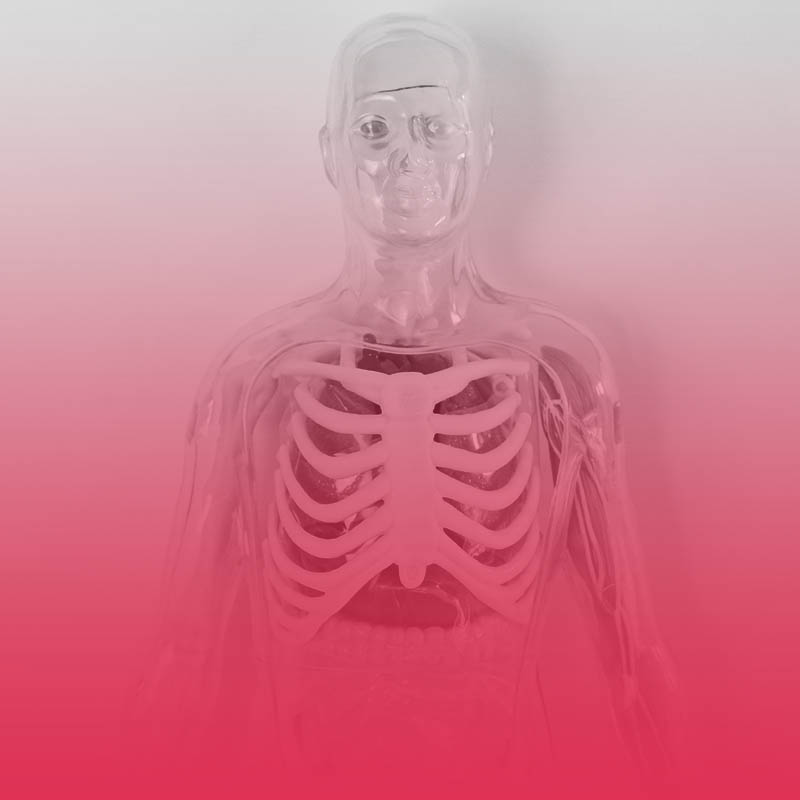
MFA graduate Anie Toole was the recipient of a significant honour in 2020.
Ms. Toole, who was in her second year of the master of fine arts (visual art) at the time, was the inaugural recipient of the Human Rights Commission of Newfoundland and Labrador's (HRCNL) emerging artist artwork purchase.prize.
Thanks to a collaboration with HRCNL brokered by her supervisor, Prof. Ingrid Percy, a new category was created to provide the opportunity for students to submit works of art for consideration for the "Newfoundland & Labrador Human Rights Award.
"I consider myself lucky to be born and raised in Canada, a country with freedom and human rights as core values," said Ms. Toole in her statement outlining her personal commitment to human rights. "As a multilingual artist, and future art teacher, I strive to model behaviours of equality and opportunity for all."
Through her personal artmaking, which materializes the slippages that occur from translations, she hopes to offer a feeling of understanding between cultures through beauty.
"Art has the power to touch people deeply and to heal," she said. "My material is cloth, a medium that is shared by all in our everyday lives. Cloth evokes memories that unite cultures, by the patterns and motifs found in the clothing we wear or in the decor of our homes."
The piece she submitted, titled Bedrock Tabby-Twill-SATIN, addresses directly subjects related to human rights.

Bedrock Tabby-Twill-SATIN, 2019. Cotton, Merino wool, linen. Hand weaving on a 20-shaft loom. Natural dyes of osage orange, lac and marigold on Merino superwash wool. Hand twisted fringe. Label: Cotton, linen. Handweaving on a digital Jacquard loom, sewing. 95cm x 146cm. Photo credit: Marc André Jesus.
"My weavings serve as metaphors to human relationships," said Ms. Toole. "Weave structures are resolved using a mathematical approach. By combining all three basic structures in one cloth, I am embedding all of the potential crossings and migrations, approximating a cloth that could be made of all cultures."
Here is an excerpt from her statement:
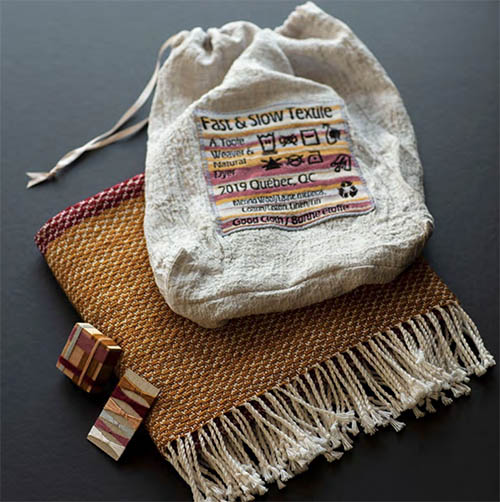
I have an interest in historic and heritage textiles. There is a tradition of German migrants who were itinerant Jacquard weavers that wove coverlets in Pennsylvania and Ontario. The blanket had wool on one side and linen, or cotton, on the other side and there was a dark and light side. The labels on the corners of the coverlets often had the name of the weaver, the date and place of creation, and other information, sometimes the name of who it was woven for. The labels of Bedrock Tabby-Twill-SATIN, handwoven on a digital Jacquard loom, display the structure, it gives the code for weaving the blanket. The storage bag encourages the owner to take the throw along with them wherever they go or to store it carefully; a block of cedar for preservation as well as mending threads and a blunt needle are included. Hence, the folklore associated to the labels relate to the subjects of "Article 13 Everyone has the right to leave any country, including his own, and to return to his country" and "Article 15 Everyone has the right to a nationality" of the Universal Declaration of Human Rights. Additionally, one can wrap themselves or someone else in this throw, or wear it like a shawl or a scarf, as a symbol of care. This speaks to "Article 24 Everyone has the right to rest and leisure". The handwoven label on the coverlet reads "fast and slow". It reads as a reference to my creative practice alternating between ancestral and digital fiber techniques; from natural dyes to digital Jacquard handweaving based on computer files of binary pixels. The usual laundry symbols are expanded to include sustainability: mend, repurpose and recycle. These environmental goals speak to the ways of the past and the ways to a sustainable future. Human rights encompasses the present and future.
Ms. Toole has just been awarded the Prix Émergence en métiers d’art, Prix d’excellence des arts et de la culture/Emerging fine craft award, for the Excellence in Arts and Culture Prize for the regions of Capitale-Nationale and Chaudière-Appalaches and also earned the title of Memorial University, Fellow of the School of Graduate Studies. She is the recipient of a Textile Society of America Student and New Professional Scholarship Award and has received grants from the Canada Council for the Arts, Conseil des arts et des lettres du Québec, Surface Design Association, Social Sciences and Humanities Research Council of Canada (SSHRC) and the Joseph-Armand Bombardier Canada Graduate Scholarship.
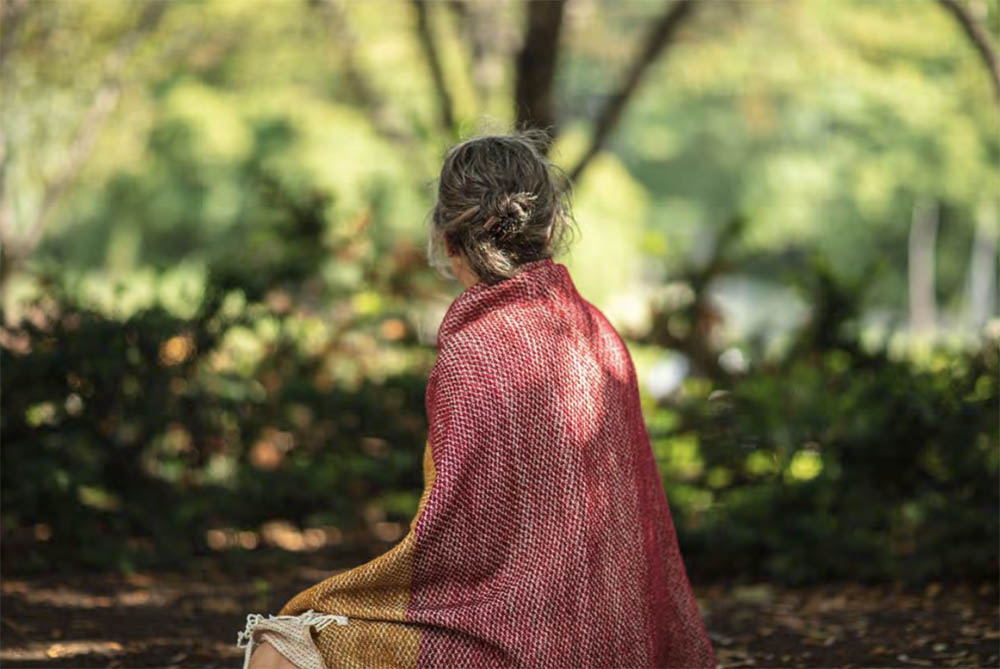
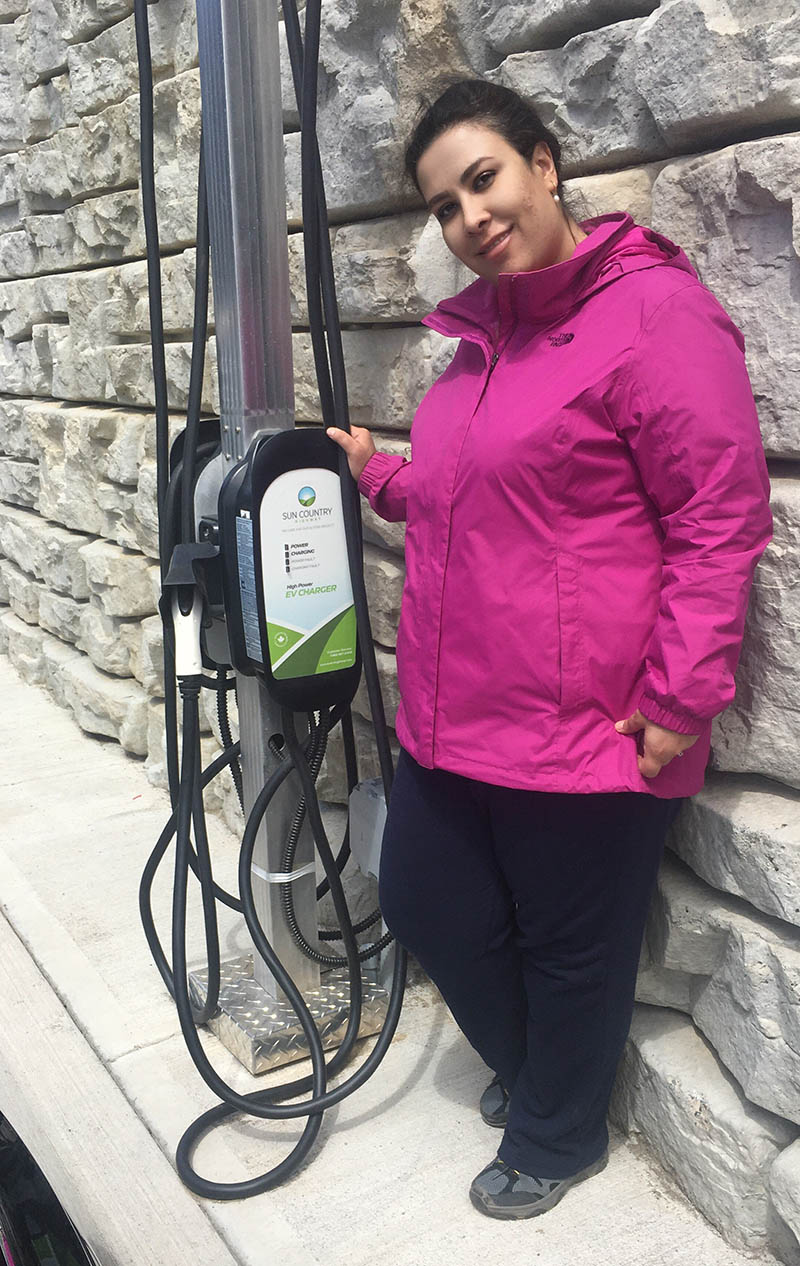
Samira Hatami, MAEP student
The work of graduate student Samira Hatami aims to uncover the barriers to making Newfoundland and Labrador a leader in e-mobility.
Samira, who is pursuing a master of arts in environmental policy under the guidance of supervisor Dr. Garrett Richards, wants to understand why our province has one of the lowest usage rates of electric vehicles in the country, and help provide ways to change that.
The title of her thesis topic is "A roadmap for advancing Newfoundland towards the future of E-Mobility: Barriers of public uptake and relevant policy solutions."
Samira cites that according to Natural Resources of Canada, until 2018, electricity consumption for transportation purposes in Newfoundland and Labrador (NL) was zero. The primary fuels used were motor gasoline, diesel fuel oil, aviation turbo fuel and heavy fuel oil, respectively. As it is adjusted from the Environment Canada's 2019 National Inventory Report, in 2017, transportation is the second most polluting sector in Newfoundland.
"Considering this fact that refined petroleum products were the largest fuel type consumed in Newfoundland and Labrador, and while this province is the fifth largest producer of electricity in Canada with a significant generating capacity, we face the question of why the main reliance of fuel consumption is still on petroleum products," she said.
When it comes to electric vehicle adoption rate, she cites that in 2020, 95.4% of ZEVs sales occurred in British Columbia, Ontario and Quebec. Whereas until September of this year, there were only 190 electric vehicles on our province's roads, which was the lowest uptake of electric vehicles in Canada.
"The current situation with the infrastructure and potential for electricity generation in the province makes viable the moving to electrify the transportation system in the province with no concerns regarding extreme pressure on the grid," said Samira. "It is an obvious opportunity for a full-market EV strategy that the provincial government can take advantage of to combat climate change."
Samira plans to investigate the current hurdles towards public interest, refine the problems, and develop the most feasible policy solution to help the province along the road of electric vehicles.
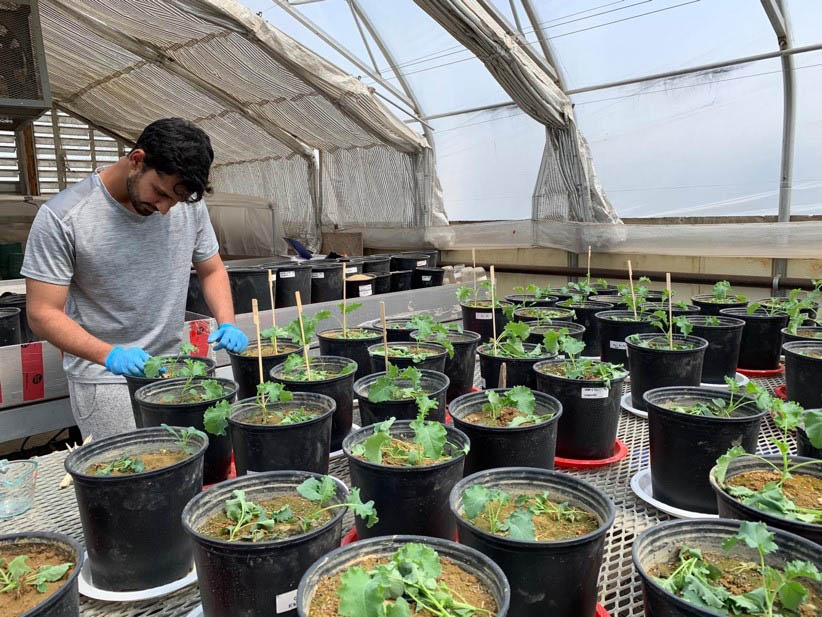
Bilal Javed, BEAS student
Transforming Newfoundland and Labrador soil from acidic to arable is the aim of the research of Bilal Javed of Faisalabad, Pakistan.
Mr. Javed is pursuing a Master of Science in boreal ecosystem and agriculture science at Grenfell Campus, is working with wastes from Corner Brook Pulp and Paper Ltd. (CBPPL), converting it into a liming and nutrient source for plants and soil. He is passionate about his work, and reflects that upon graduation, he would consider continuing to work in Newfoundland and Labrador to give back to the province.
"I have been collaborating with the provincial government during my master’s research and would like to continue working with them as they are highly professional and cooperative," said Mr. Bilal. "The government has invested considerably in my research – that is why I want to do something for the province and its agriculture sector – it will be the right choice for me."
He added that he is encouraged by the province’s plan to increase NL agriculture production in "The Way Forward." "I would love to be part of such programs where I will be able to use my professional skills," he said. The problem Mr. Javed is tackling is rooted in our province’s soil: the province is covered by podzolic – acidic and infertile – soils, limiting the potential of agriculture industry, which currently produces just 10 per cent of its total food requirement.
"Low agriculture production in the province forces government to import agriculture commodities," he said. "People are unable to afford expensive vegetables. Solving this agricultural problem would be a breakthrough in the economy of the province." He said farmers generally use expensive commercial limestone and chemical fertilizers to grow crops, whereas wood ash and paper sludge produced as waste by the Corner Brook paper mill have some of the same nutritional properties and are inexpensive. According to information he collected from CBPPL, the mill produces about 10,000 tons of wood ash and 5,000 tons of paper mill sludge as waste annually. Mr. Javed is using those waste products, as well as biochar – a carbon-rich soil amendment – to determine their ability to increase soil and crops productivity.
"Results of my work showed that these wastes performed just as limestone and produced bigger and heavier plants as compared to those plants that contain only limestone and chemical fertilizer in soil," said Mr. Javed, adding that his greenhouse experiments on kale and ryegrass used various combinations of limestone, wood ash, paper sludge and biochar.
"Treatments had significant effects on soil pH in both crops," said Mr. Javed, adding that the most efficient additions were wood ash alone and wood ash plus sludge. "Results of these greenhouse experiments tell us that paper mill wastes are useful as liming and nutrient source and a cheap alternative input instead of limestone in crop production." Mr. Javed is in the last year of his program; following the completion of his thesis he aims to publish these results in peer reviewed journals.
"My dream is one day this province will be self-sufficient for its agriculture production and everyone will be able to purchase inexpensive and fresh vegetables," he said.